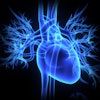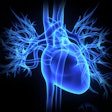Wednesday, November 28 | 11:40 a.m.-11:50 a.m. | SSK05-08 | Room N227B
In this talk, researchers will report that a machine-learning algorithm can perform better than radiologists in detecting changes in findings on serial chest radiographs.Automated approaches with machine-learning algorithms have been proposed to improve diagnostic accuracy and reduce interpretation time for chest radiographs, according to Dr. Ramandeep Singh of Massachusetts General Hospital (MGH) in Boston. Previous studies have shown promising results for assessing specific conditions such as pulmonary tuberculosis, cystic fibrosis, peripherally inserted catheters and endotracheal tubes, pneumoconiosis, and lung nodules.
"[However,] to our best knowledge, prior studies have not assessed the accuracy of [deep learning] for change or stability in findings on serial chest radiographs," Singh said.
As a result, the researchers sought to assess the ability of a machine-learning algorithm (Qure.ai) to detect changes in findings for pulmonary opacities, hilar prominence, enlarged cardiac silhouette, and pleural effusion on follow-up chest radiographs. After two radiologists first assessed 300 chest radiographs to form a standard of reference for radiographic findings, four other chest radiologists independently evaluated changes in radiographic findings over serial radiographs.
After performing receiver operating characteristic analysis, the researchers found that the algorithm outperformed the four test radiologists for assessing change in the detected abnormalities.
"Deploying a preliminary [machine-learning] algorithm can improve diagnostic accuracy," said senior study author Dr. Jo-Anne Shepard of MGH. "Additionally, it can help in image interpretation in areas where either a radiologist is not available around the clock or when a quick wet read is required. [The algorithm] was most accurate in assessment of enlarged cardiac silhouette."
Get all the details by attending this talk on Wednesday.




















